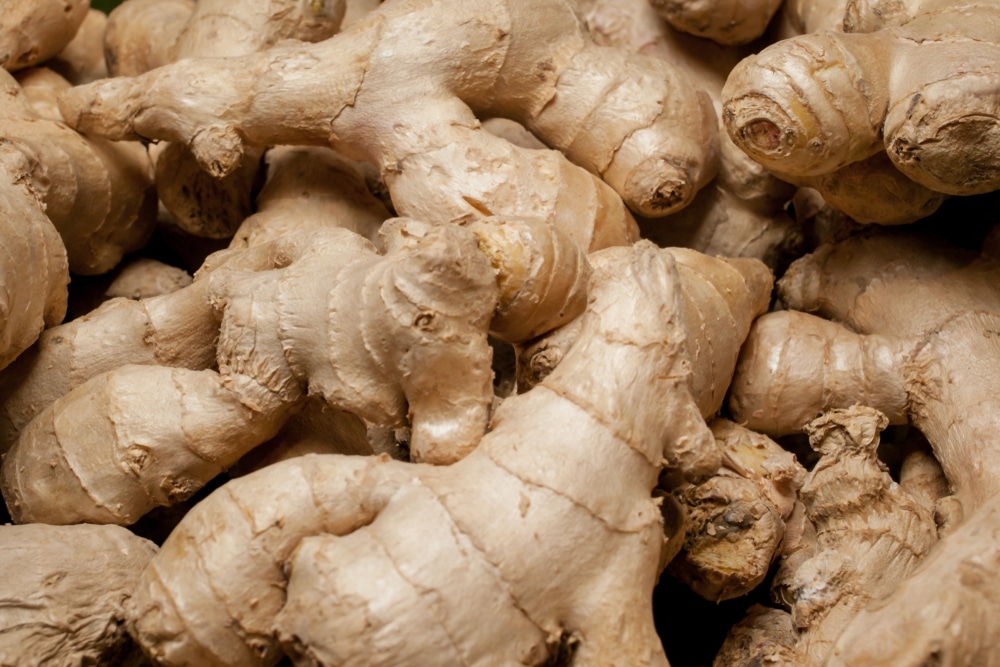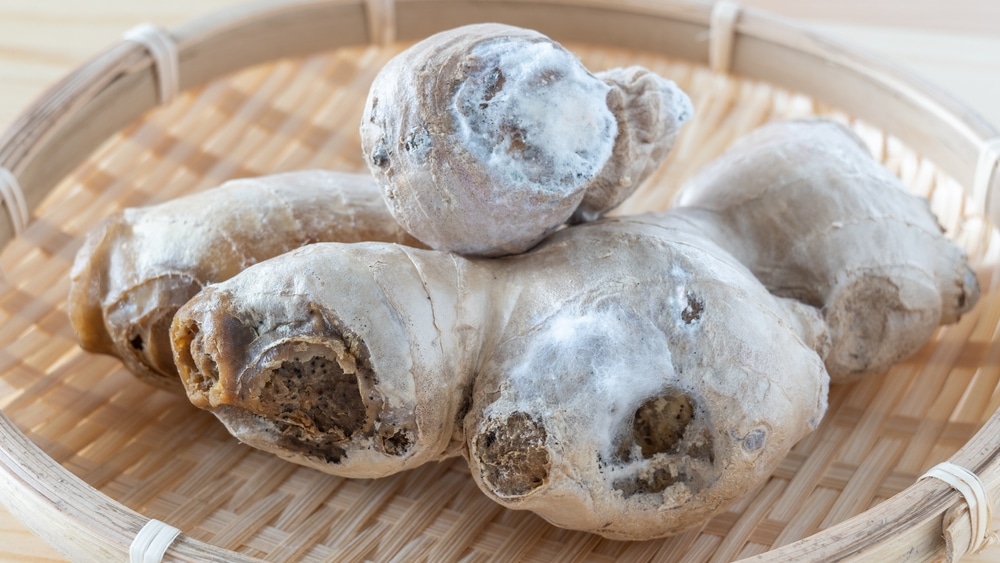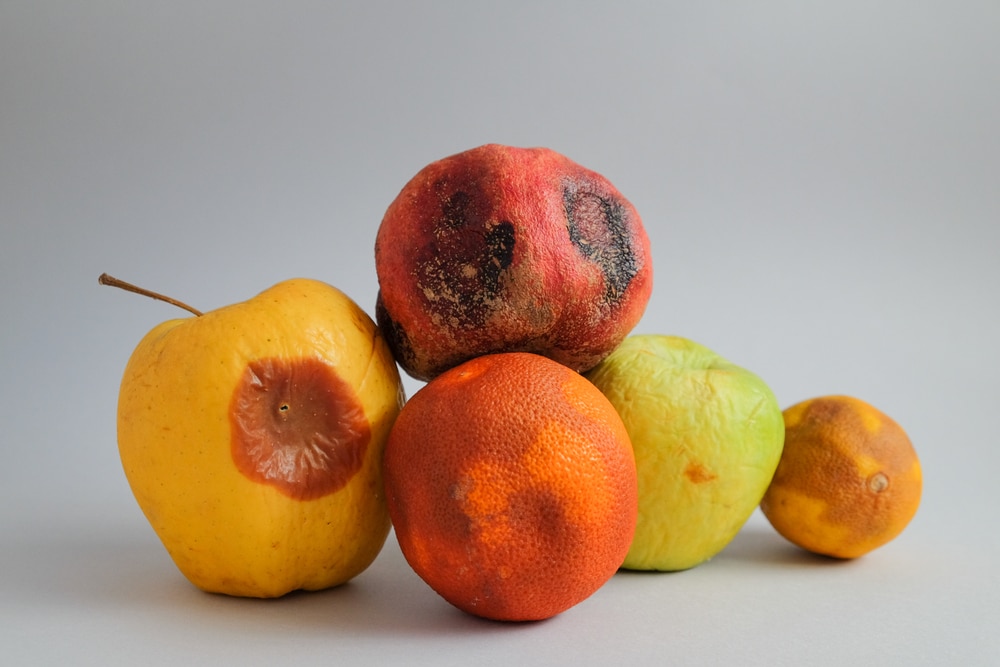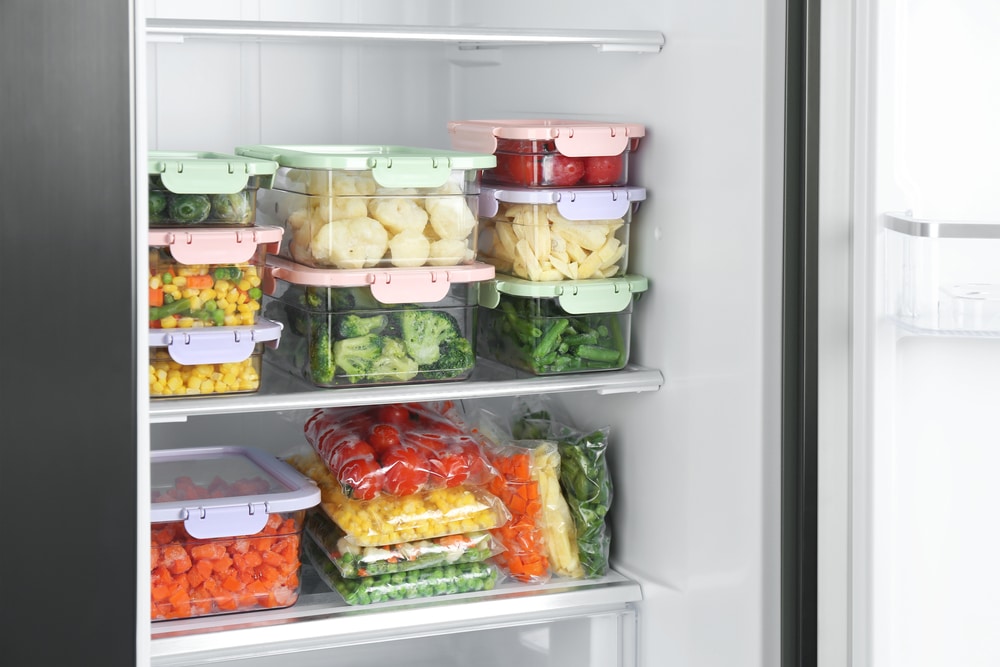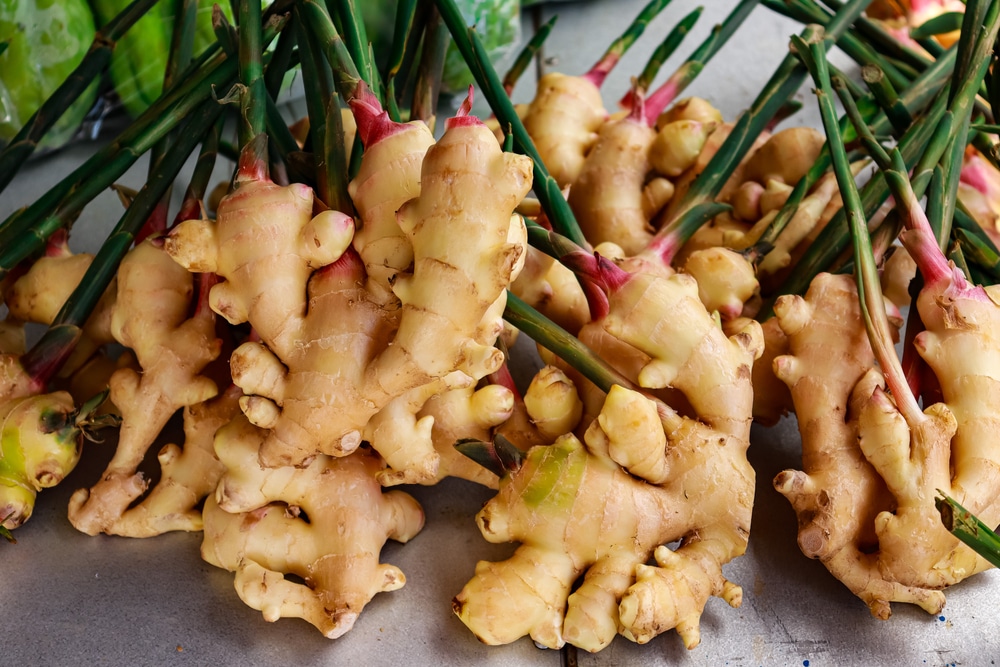
Ginger is one of the best ways of flavoring savory dishes as it adds a hot and spicy kick to the food. In addition, it can be cut into thin strips and used as a garnish.
For this reason, it has become a kitchen staple, especially for people who like savory and hot flavors.
It’s actually common for people to purchase bigger ginger pieces to suffice their cooking and garnishing needs. However, if you cut the ginger and there is a green film on the inside, we are sharing what it means!
Ginger Is Green From Inside – What Does It Mean?
There are various reasons behind a blue-green ring in ginger, even if you have purchased fresh ginger from the market.
Usually, the green film is caused by a higher level of anthocyanins in the ginger and some ginger varieties also have a unique green color.
In particular, the Hawaiian ginger has a blue-greenish color but this variety is bred to have this color. For this reason, you should consider the variety of ginger you are using.
The mature Hawaiian ginger will have a deeper color and can be consumed without any health risks.
On the other hand, if the ginger has a higher anthocyanins level, it’s still safe to consume – you can make tea or just cook it.
Why Is Ginger Green Inside?
Signs Of Bad Ginger
It’s common for people to associate green stuff in ginger with bad mold. The green ring in the ginger shouldn’t be a problem. However, there are other signs of bad ginger that you should consider, such as;
- Texture
Ginger is known for its hard and firm texture. However, if the ginger is not fresh or has been spoiled, it will become spongy and mushy.
It happens when the cell walls start breaking down and decaying (these cell walls give ginger its structure). In addition, the juices will start leaking out of the walls.
Soon after, the ginger will dry and the skin will be shriveled. A significant change in the texture clearly shows that ginger is not safe for consumption.
If you are still unsure, squeeze the ginger – if it’s hard and firm, you can use it. However, if it feels soft, throw it away.
- Exterior
The second sign of bad ginger is discoloration and new spots. The dark spots or green, white, or blue fuzzy texture on the ginger show that the ginger is not fresh.
Keep in mind consuming ginger with mold or dark spots can put you at risk of food poisoning.
The ginger is known for light brown skin and any signs of dark spots, bruising, and white patches mean something is off. Also, look for darkened edges around the ginger as it’s a sign of spoiled root.
The Reasons Behind Spoilage Of Ginger
It is important to understand the common reasons behind the spoilage of ginger to make sure it doesn’t happen again. Some of the common signs include;
- Exposure To Moisture
First of all, moist or wet ginger can lead to mold development. For instance, if you put down ginger on a wet shelf and didn’t notice it before putting it in the refrigerator, it can lead to mold development.
So, always check the ginger for moisture before you store it.
In case the ginger is wet, you should either use it or discard it – it won’t remain safe for storage. Also, when you put the ginger in the refrigerator, make sure the crisper drawer is fully dried.
- Improper Storage
The ginger needs proper storage to prevent mold development. In case you want to store the unpeeled ginger, just put it in the refrigerator as peel can protect the ginger flesh from moisture and keeps it fresh.
On the other hand, if you want to store the peeled ginger, you have to put it in an airtight container or a vacuum-sealed bag.
That’s because you’ve to protect the ginger from moisture and using other packaging materials can lead to moisture penetration.
- Storing It With Moldy Items
The mold has the capacity to spread through contact. In particular, if you have moldy vegetables or fruits on the countertops and you put the ginger near them, the mold spores will land on the ginger.
This results in mold development. Also, you shouldn’t consume moldy ginger even if it’s in the early stage.
Keep in mind that peeled ginger has a higher risk of getting moldy, which is why you must store it in unpeeled form. That’s because ginger skin can protect the inner flesh because it’s water-resistant and tough.
So, always store the ginger with skin while the peeled ginger should be stored in sealed bags.
Purchasing The Ginger
Purchasing fresh ginger is important if you have to store it for a longer time period. So, whenever you’ve to purchase ginger, make sure it’s free of blemishes and dark spots.
In addition, the texture should be tough and firm. The healthy and fresh ginger has smooth and light brown skin.
Storing The Ginger
Proper storage is essential to retain the freshness and flavor of the ginger. In addition, it prevents mold growth and color changes. So, let’s see how you can store the ginger!
- Refrigerator
Refrigerating is one of the most convenient ways of storing the ginger but make sure you don’t peel the ginger.
The cut and peeled ginger can also be stored in the refrigerator but it won’t stay fresh for long. Irrespective of which type of ginger you have, use a freezer bag to maximize its lifespan.
Also, when you put the ginger in the freezer bag, press out as much air as you can and put it in the crisper drawer.
On the other hand, if you don’t have a freezer bag, you can use a brown paper bag as well – this will keep the ginger fresh for over one week.
- Spirits
If you have peeled more ginger, it’s recommended that you put it in a glass jar and add sherry or vodka to cover the ginger. It will preserve the ginger for around three weeks.
However, when the liquid starts getting cloudy, you should discard the ginger because it indicates the presence of bacteria or mold.
The bottom line is that green stuff inside ginger doesn’t mean anything as long as it’s not fuzzy and slimy (such texture indicates mold). However, we still have added the storage tips to ensure your ginger remains fresh for weeks!
